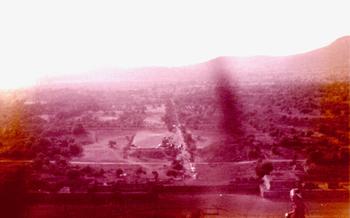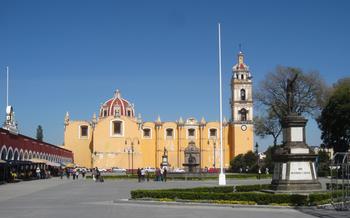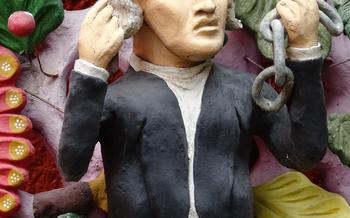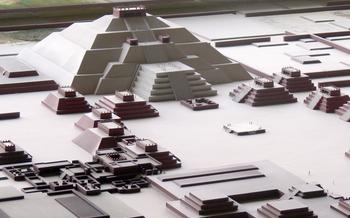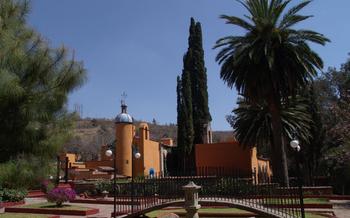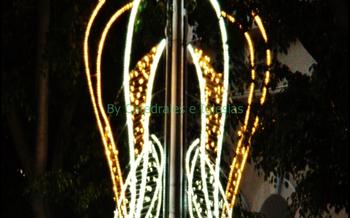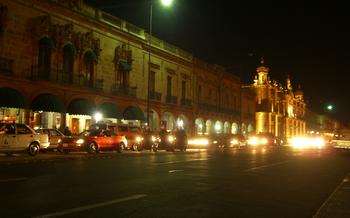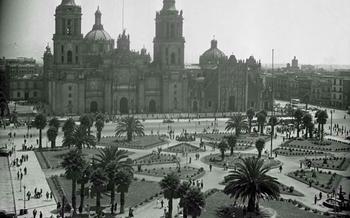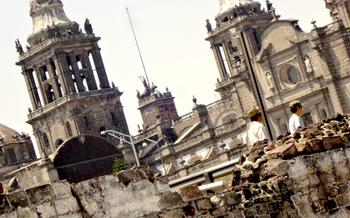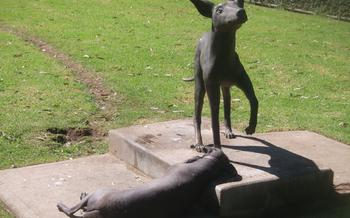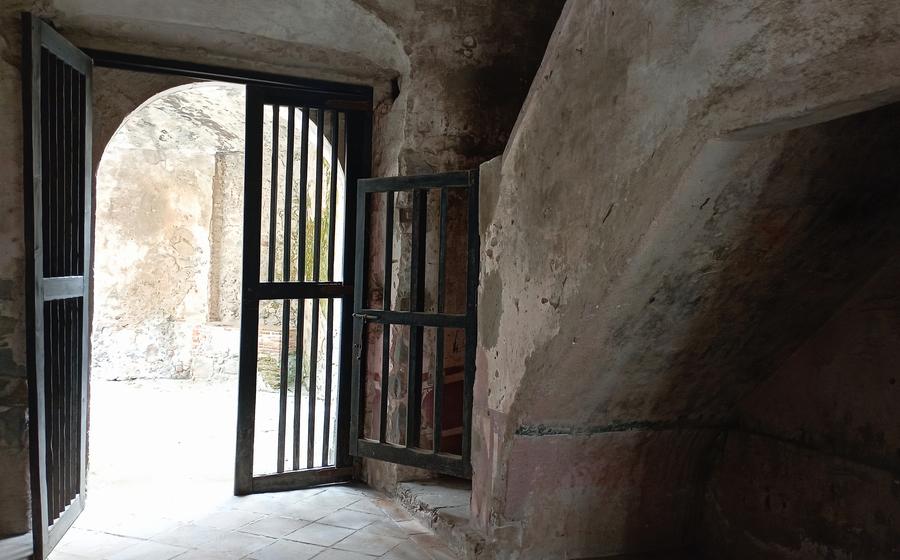
Desierto de los Leones National Park
- Flora and Fauna
- Hiking and Trekking
- Camping and Backpacking
- Picnicking and Day Trips:
- Visitor Center and Facilities
- Accessibility and Transportation
- Best Time to Visit
- Safety and Security
- Packing Essentials
- Photography Tips
- Budget Tips:
- Insider Tip: Unveiling the Lion's Head's Celestial Wonders
Flora and Fauna
The Desierto de los Leones National Park boasts a remarkable diversity of flora and fauna. Over 1,000 species of plants thrive within its boundaries, creating a vibrant tapestry of colors and textures. Visitors can marvel at the towering pines, majestic oaks, and delicate wildflowers that adorn the park's landscapes. The park is also home to a rich birdlife, with over 150 species recorded. Keen-eyed birdwatchers can spot a variety of avian species, including hummingbirds, woodpeckers, and raptors soaring through the skies. The park's mammal population is equally diverse, with deer, coyotes, rabbits, and squirrels scampering through the undergrowth. Visitors may also encounter reptiles and amphibians, including snakes, lizards, and frogs, adding to the park's rich biodiversity.
Hiking and Trekking
The Desierto de los Leones National Park offers a diverse network of hiking trails that cater to all levels of hikers, from beginners to experienced adventurers. Whether you prefer a leisurely stroll through the forest or a challenging trek to the top of the "Lion's Head" rock formation, the park has something for everyone.
The park's well-marked trails wind through a variety of ecosystems, including forests, grasslands, and desert. Along the way, you'll encounter stunning views of the surrounding mountains, valleys, and rock formations. Keep an eye out for wildlife, as the park is home to a variety of animals, including deer, coyotes, and birds.
One of the most popular hikes in the park is the trail to the top of the "Lion's Head" rock formation. This challenging hike takes about two hours round-trip and offers breathtaking views of the surrounding area. The trail is steep and rocky in places, so be sure to wear sturdy hiking shoes and bring plenty of water.
For those looking for a more leisurely experience, there are several shorter trails that offer equally stunning views. The "Sendero del Venado" trail is a short, easy hike that takes you through a beautiful forest. The "Sendero del Coyote" trail is a bit longer and more challenging, but it offers stunning views of the park's desert landscape.
No matter which trail you choose, be sure to bring a camera to capture the park's natural beauty. And don't forget to pack a picnic lunch to enjoy in one of the park's many designated picnic areas.
Camping and Backpacking
Desierto de los Leones National Park offers a unique opportunity for camping and backpacking amidst its stunning natural beauty. Several designated camping areas are available within the park, providing basic amenities such as picnic tables, grills, and restrooms. These areas are ideal for those seeking a rustic camping experience under the stars.
For a more adventurous experience, backpacking enthusiasts can explore the park's backcountry by following its extensive network of trails. The park's diverse terrain, ranging from lush forests to arid desert landscapes, offers a variety of backpacking opportunities for all skill levels. Hikers can choose from day hikes to multi-day backpacking trips, depending on their preferences and endurance.
It is important to note that camping in Desierto de los Leones National Park requires proper planning and preparation. Visitors must bring all necessary camping gear and supplies, including tents, sleeping bags, cooking equipment, and food. Additionally, it is essential to be self-sufficient and prepared for any weather conditions or emergencies that may arise during a backpacking trip.
Picnicking and Day Trips:
The Desierto de los Leones National Park is a great place to pack a lunch and enjoy a picnic in a beautiful natural setting. There are many picnic areas located throughout the park, offering tables and grills for your convenience. You can choose to picnic in a secluded spot or near one of the park's many attractions, such as the ruins of the Carmelite monastery or the "Lion's Head" rock formation.
If you're short on time, you can also visit the park for a day trip from Mexico City. The park is located about an hour's drive from the city, and public transportation is available. Once you arrive at the park, you can choose from a variety of activities, including hiking, biking, horseback riding, and picnicking.
Remember to bring food, water, and other supplies for your day trip, as there are no restaurants or stores within the park. You should also be prepared for changes in weather conditions, as the weather in the park can change quickly.
Visitor Center and Facilities
Desierto de los Leones National Park offers a visitor center to enhance your experience and provide essential services. This center serves as a valuable resource for park information, including brochures, maps, and guidance on park activities. Knowledgeable staff is on hand to answer your questions and help you plan your visit.
Restroom facilities are conveniently located near the visitor center and other popular areas of the park, ensuring your comfort during your exploration.
For those who wish to take home a memento of their time in the park, a gift shop is available, offering a variety of souvenirs and items related to the park's history, flora, and fauna.
Admission to Desierto de los Leones National Park requires a modest entrance fee, which contributes to the maintenance and preservation of this beautiful natural haven.
Accessibility and Transportation
Desierto de los Leones National Park is located approximately one hour's drive from Mexico City. The park is easily accessible by car, and there is ample parking available at the visitor center. Visitors can also take public transportation to the park, as there are several bus routes that stop nearby. However, it is important to note that the park is not very accessible for visitors with disabilities. The trails are unpaved and can be difficult to navigate for those with mobility issues. There are also no wheelchair-accessible restrooms or other facilities in the park. If you have any concerns about accessibility, please contact the park's visitor center before your visit.
Best Time to Visit
The best time to visit the Desierto de los Leones National Park is during the dry season, which runs from November to April. During this time, the weather is generally mild and sunny, with little rain. The trails are also in good condition, making it ideal for hiking and trekking.
Avoid visiting the park during the rainy season, which runs from May to October. During this time, the trails can be muddy and slippery, making it difficult to hike. The park is also more crowded during this time, as many people seek refuge from the heat and humidity of Mexico City.
If you are planning to visit the park during the week or early in the morning, you will be able to avoid the crowds. The park is busiest on weekends and holidays, so it is best to visit during the week if you want to have a more peaceful experience.
Safety and Security
The Desierto de los Leones National Park is generally considered a safe place to visit, but it is important to be aware of your surroundings and take precautions to ensure your safety. It is advisable to stay on marked trails and avoid hiking alone. Carrying a map and compass and knowing how to use them is also essential, as it is easy to get lost in the park's extensive trail system. Be prepared for changes in weather conditions, as the weather can change quickly in the mountains. If you are camping, be sure to store your food and other belongings securely to avoid attracting wildlife and to keep your campsite clean.
Packing Essentials
When packing for a trip to Desierto de los Leones National Park, it's essential to bring comfortable hiking shoes or boots with good ankle support to navigate the park's uneven terrain. Dress in layers to adapt to changing temperatures throughout the day, as the park's elevation can cause significant temperature fluctuations. Sunscreen, sunglasses, and a hat are crucial for protection against the sun's intense rays, especially during the midday hours.
Most importantly, bring plenty of water, especially if you plan to hike or camp. The park's dry climate can lead to dehydration quickly, and there are limited water sources available. Consider bringing a water filtration system or purification tablets if you plan to drink water from natural sources. A first-aid kit, a map and compass, and a flashlight or headlamp are also recommended for safety and emergencies.
Photography Tips
When visiting Desierto de los Leones National Park, don't forget your camera! The park is a photographer's paradise, with stunning landscapes, diverse wildlife, and unique rock formations. To capture the best photos, be sure to bring a camera with a good zoom lens to capture wildlife and landscapes. A tripod is also essential for stabilizing your camera for long exposures. The best time to shoot is during the golden hours (sunrise and sunset), when the light is at its most beautiful. Remember to respect the park's wildlife and not disturb them while taking photos.
Budget Tips:
Planning and budgeting are essential when visiting Desierto de los Leones National Park. The park's entrance fee, transportation, food, and accommodation can add up quickly, so it's important to be prepared. To save money, consider bringing your own food and drinks, as there are limited options available within the park. Camping is also a great way to save on accommodation costs, as there are several designated campsites within the park. Be prepared for unexpected expenses, such as souvenirs and tips, by bringing extra cash or a credit card.
Insider Tip: Unveiling the Lion's Head's Celestial Wonders
As the sun bids farewell and darkness envelops the Desierto de los Leones National Park, a hidden gem awaits those willing to venture beyond the beaten path. The Lion's Head, a majestic rock formation that dominates the park's skyline, transforms into a celestial observatory, revealing the cosmos in all its glory.
Hike to the summit of the Lion's Head early in the morning or late in the afternoon to escape the throngs of visitors and bask in the tranquility of nature's embrace. As dusk paints the sky in hues of orange and purple, the stars begin to emerge, twinkling like celestial diamonds scattered across the velvety canvas of the night.
Don't forget your flashlight or headlamp, as the path to the summit can be treacherous in the fading light. But the reward is worth every step, as you reach the apex and the Milky Way unfurls before your eyes, a shimmering river of stars stretching across the heavens.
Lie back on the cool rock and let the cosmos wash over you. Imagine yourself as an ancient astronomer, deciphering the secrets of the universe as constellations dance overhead. The Lion's Head becomes your celestial throne, where you can commune with the stars and feel the vastness of the universe within your soul.
This hidden gem of the Desierto de los Leones National Park is a testament to the park's natural and celestial wonders. Embrace the opportunity to witness the Milky Way from the Lion's Head, and let the cosmos ignite your imagination and transport you to the realm of dreams.
